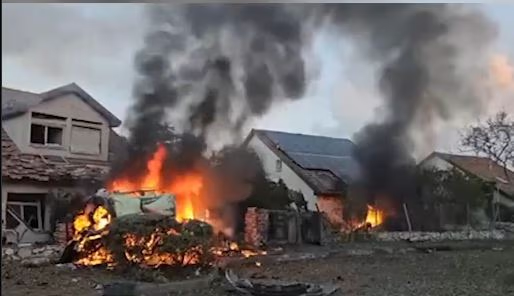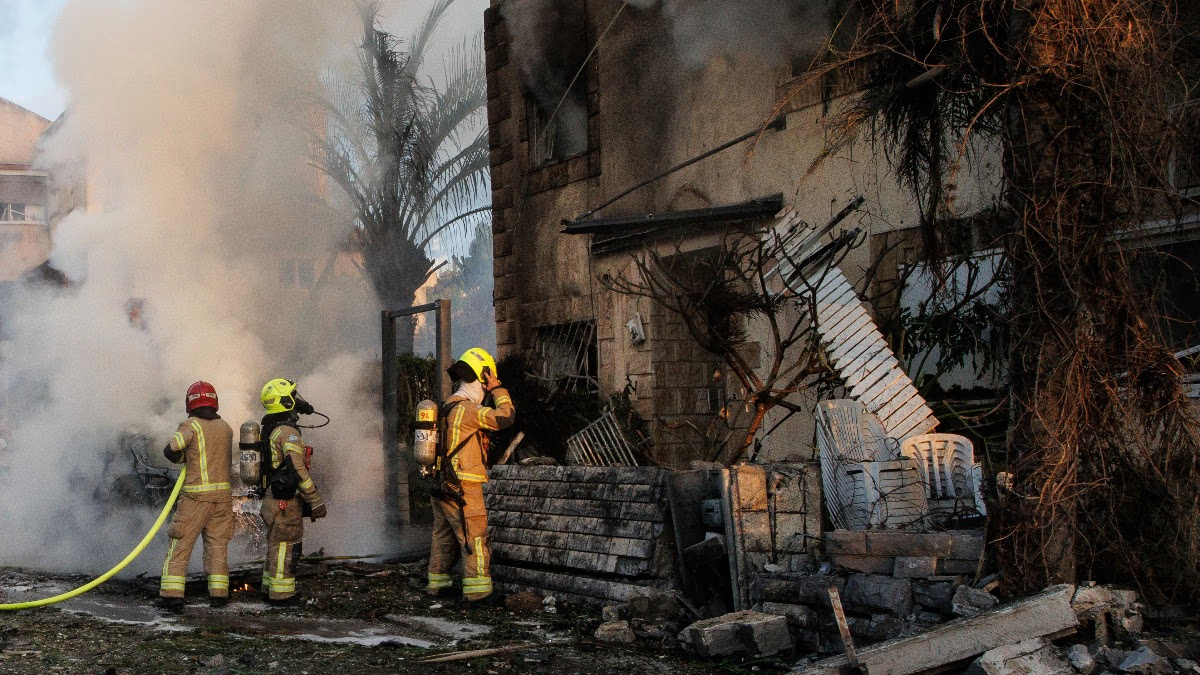Israel and Hezbollah are continuously engaging in airstrikes, escalating the tension between Israel and Lebanon. On Sunday, Hezbollah launched a relentless barrage of rockets, missiles, and drones towards Israel, causing panic. According to reports, early Sunday, Hezbollah fired over 100 rockets, missiles, and drones into northern Israel, causing widespread chaos. This is considered one of Hezbollah's largest retaliatory attacks, confirmed by the IDF.
The Israeli Defense Forces stated that Hezbollah is persistently targeting their citizens. Over 140 rockets and drones were fired into the Jezreel Valley on Sunday morning. Alerts were subsequently issued near several military bases including Haifa, Nazareth, and Afula. The IDF tweeted, ‘Hezbollah terrorists are targeting our citizens. Thousands of Israelis spent their night hiding in bomb shelters, with rockets flying over their heads, some even hitting their homes. Rocket alert sirens blared throughout the night.’
Following these attacks, Israel has also retaliated by launching hundreds of missiles. While the world expected Israel to remain silent for a few days after the pager and walkie-talkie blasts in Lebanon, Israel has made it clear through aggressive attacks that it does not plan to stop until it has completely neutralized its enemies.
This conflict, which began after the pager blasts in Lebanon on September 17, has now escalated to airstrikes. Israel is creating chaos not just with drones but also with fighter jets. Hezbollah might not have anticipated such a fierce response from Israel. The attacks from Hezbollah have only added to their woes, as they were already reeling from the earlier blasts.

Source: aajtak
These ongoing attacks are likely to fan the flames of war further. If the situation escalates, the conflict could extend beyond Hezbollah and Israel, involving Lebanon. What will be the outcome if a full-scale war breaks out between the two nations? In terms of military power, how does Lebanon compare to Israel? Let’s delve into the military capabilities of both nations.
The border between Israel and Lebanon is approximately 130 kilometers long, marking Israel's northern frontier and Lebanon's southern boundary, also known as the Blue Line. Although Hezbollah challenges Israel frequently, Lebanon, as a nation, does not match Israel's military prowess. According to the Global Firepower Index, which includes 145 countries, Israel ranks 18th, while Lebanon is far behind at 111th. This stark contrast highlights the vast difference in their military capabilities.
Analyzing the military strength on various fronts, Lebanon has around 80,000 soldiers, while Israel boasts a force of 173,000 soldiers, more than double Lebanon’s. Additionally, Israel has a reserve force of 465,000, whereas Lebanon lacks any reserve forces.
In terms of paramilitary strength, Lebanon surpasses Israel with 25,000 paramilitary personnel compared to Israel’s 8,000. However, in air power, Lebanon lags significantly with just 78 aircraft, while Israel commands 601. Lebanon has no fighter jets, while Israel has 241.
Moreover, Lebanon possesses 9 dedicated attack aircraft compared to Israel’s 32, and 9 training fighter jets to Israel’s 153. Lebanon also has 60 helicopters, while Israel owns 126, including 48 attack helicopters, whereas Lebanon has none. The disparity in artillery is equally significant; Lebanon has 361 tanks compared to Israel’s 2,200, and 9,864 armored vehicles to Israel’s 56,290.
When it comes to self-propelled artillery, Lebanon has 84 compared to Israel’s 650. Israel also has a vast arsenal of munitions and war equipment.
Israel’s naval power also outstrips Lebanon's, with Israel possessing 5 submarines while Lebanon has none. Neither country has destroyers or frigates, but Israel has 7 corvettes, and Lebanon has none. Furthermore, Lebanon has 22 patrol vessels compared to Israel’s 45. Should the conflict escalate, Israel's military strength gives it a significant advantage.




